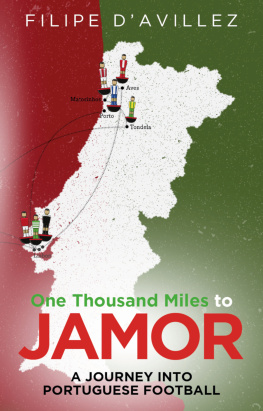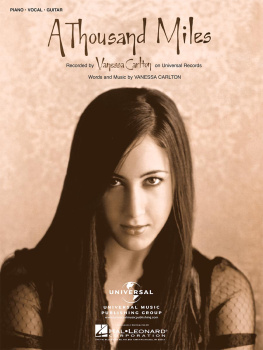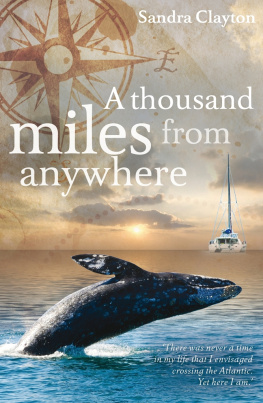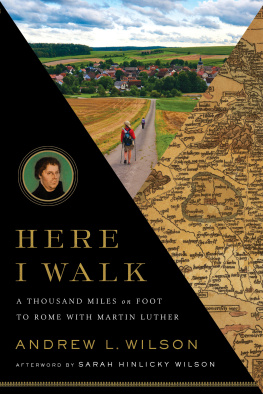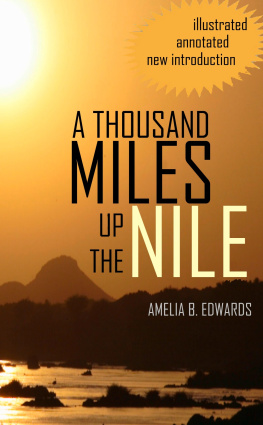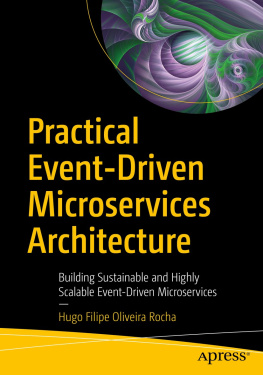Filipe Avillez - One Thousand Miles From Jamor
Here you can read online Filipe Avillez - One Thousand Miles From Jamor full text of the book (entire story) in english for free. Download pdf and epub, get meaning, cover and reviews about this ebook. year: 2020, publisher: Independent Publishers Group, genre: Home and family. Description of the work, (preface) as well as reviews are available. Best literature library LitArk.com created for fans of good reading and offers a wide selection of genres:
Romance novel
Science fiction
Adventure
Detective
Science
History
Home and family
Prose
Art
Politics
Computer
Non-fiction
Religion
Business
Children
Humor
Choose a favorite category and find really read worthwhile books. Enjoy immersion in the world of imagination, feel the emotions of the characters or learn something new for yourself, make an fascinating discovery.
- Book:One Thousand Miles From Jamor
- Author:
- Publisher:Independent Publishers Group
- Genre:
- Year:2020
- Rating:3 / 5
- Favourites:Add to favourites
- Your mark:
- 60
- 1
- 2
- 3
- 4
- 5
One Thousand Miles From Jamor: summary, description and annotation
We offer to read an annotation, description, summary or preface (depends on what the author of the book "One Thousand Miles From Jamor" wrote himself). If you haven't found the necessary information about the book — write in the comments, we will try to find it.
One Thousand Miles From Jamor — read online for free the complete book (whole text) full work
Below is the text of the book, divided by pages. System saving the place of the last page read, allows you to conveniently read the book "One Thousand Miles From Jamor" online for free, without having to search again every time where you left off. Put a bookmark, and you can go to the page where you finished reading at any time.
Font size:
Interval:
Bookmark:


First published by Pitch Publishing, 2019
Pitch Publishing
A2 Yeoman Gate
Yeoman Way
Durrington
BN13 3QZ
www.pitchpublishing.co.uk
Filipe Avillez, 2019
All rights reserved under International and Pan-American Copyright Conventions. By payment of the required fees, you have been granted the non-exclusive, non-transferable right to access and read the text of this e-book on-screen. No part of this text may be reproduced, transmitted, downloaded, decompiled, reverse-engineered, or stored in or introduced into any information storage and retrieval system, in any form or by any means, whether electronic or mechanical, now known or hereinafter invented, without the express written permission of the Publisher.
A CIP catalogue record is available for this book from the British Library
Print ISBN 978 1 78531 625 8
eBook ISBN 978 1 78531 658 6
--
Ebook Conversion by www.eBookPartnership.com
To Mary Anne, my mother, who
never quite understood my passion
for football, and never gave up
hope that I would one day learn
the value of fair play. And to Mary
Anne, my daughter, who inherited
my passion for football. Were still
working on the fair play.
I spent most days in July checking the Portuguese Football Federations website, trying to figure out when the draw for the first round of the cup was going to be. Nothing. I couldnt even find a list of the clubs that were taking part or the dates of the actual matches.
My goal had been set a few months back, in the final stages of the cup in 2018, when Caldas were making history, progressing to the semi-finals, where they ended up losing to Desportivo das Aves, a small team that would deal Sporting their death blow in the final game of the season, which was ending in despair and total meltdown for the Lisbon-based club, board and team. My idea was to identify the club in the first round of the cup, which was geographically the furthest distance from the national stadium, or Jamor Stadium as it is known, and follow their first game, proceeding then with the winner of that match, and so on, all the way to the final.
The first and second rounds are the ones that most fans, who usually only follow Portugals big three, or, at best, the first tier teams, never notice.
But there is a world beyond the top level of football. That is what I was hoping to discover, travelling through a competition which for most of the participants is the most important one they can ever aspire to take part in, let alone win, even if for the actual winners it is often more of an afterthought or a consolation prize for when the main objective, the league, fails.
But there was one difficulty with my plan. Naturally, given Portugals geography, the most distant club from Jamor would be from the Azores archipelago. With the project only just taking off, and no funding to speak of, it would not be possible to fly to the Azores to cover a game in the first round of the cup.
Finally, the federation announced the date of the draw, 10 August. Around 120 teams would be included, divided into zones according to geography. Fortunately for me, the rules indicate that the clubs from the Azores and Madeira islands play in the Lisbon and Porto series, closer to Portugals two main airports, making life a little easier for the teams that need to travel. Nevertheless, there was a risk that the club furthest from Jamor would play at home. I would just have to wait for the draw.
When the results of the draw were announced, a couple of other fixtures caught my attention. If all else failed I could kick the book off with TorreenseCoutada, a Torres Vedras derby that had never been played in official tournaments, or with a 1 de DezembroSintrense, a heated Sintra derby.
The Azores clubs were easy enough to identify. Two of them were from the small island of Graciosa: Graciosa Futebol Clube and Sport Clube Martimo, known as Martimo Graciosa, so as not to confuse them with Clube Sport Martimo from Madeira, possibly the most important of Portugals island-based clubs.
Which was the greatest distance from Jamor? I ended up calling it a draw, since both are based in the same town, Santa Cruz da Graciosa, and play in the same stadium, around 1,600 kilometres (1,000 miles) from the national stadium. So the tie-breaker ended up being which was the most practical for me. Whereas Martimo Graciosa had drawn Angrense, also from the Azores, Graciosa FC would have the luck of travelling to the mainland to play Casa Pia, which just happens to be one of the clubs closest to my house, after rivals Belenenses and Atltico Clube de Portugal, and the closest to my workplace.
So it was decided, the first game to follow would be Graciosa FC against Casa Pia, to take place in the Pina Manique stadium on 9 September.
Casa Pia Atltico ClubeGraciosa
Futebol Clube (9 August 2018)
Volcanoes and earthquakes! You have no idea!
Over the years of going to football games I have seen many fans yell at opposition players who dive, but this one was something new.
I am surrounded by people who were, indeed, raised amidst earthquakes and were born, as one of the chants sung by Graciosa Futebol Clube fans puts it, in the middle of a volcano.
With a population of just under 5,000, Graciosa is one of the more distant islands of the Azores archipelago, located about halfway between Europe and America, in the middle of the Atlantic. But the island also has many friends, which helps explain why there are close to 50 people in the stands to watch the game in the first round of the Portuguese Cup.
It is an uneven match. On one side are Casa Pia who play in the Portuguese Championship, the third tier of Portuguese football, and on the other a team that had played in the island championship the previous season, against only two opponents, having been promoted to the Azores Series, which covers the entire archipelago and is equivalent to the mainlands District Leagues, or fourth tier. The Casa Pia players are coached by former Benfica player Ruben Amorim and include among their number the brother of Benfica central-defender Ruben Dias. They are professionals and none of the Graciosans beside me in the stand had any illusions about the difficulty of the task faced by their friends on the field.
My afternoon with the sons of the volcano began earlier. I met the first fans in the locally famous David da Buraca restaurant, some 200 metres from the Pina Manique stadium. Joo Santos or Janeko the first Graciosa fan I made contact with over Facebook, was there with his friend Lus, who is from Porto and supports FC Porto but fell in love with the small island and travelled 300 kilometres just to see the game. I was introduced to Paulo Jorge, the clubs treasurer, but also, I soon discover, a former player and island champion for both Graciosa and their arch-rivals Sport Clube Martimo. And, if that isnt enough, he is also the president of the Town Council of Santa Cruz da Graciosa, the islands capital.
A little before 3pm we leave the restaurant and head to the stadium, where other Graciosans and friends begin to assemble. Many are wearing the clubs characteristic red and yellow stripes. The team had just arrived and headed to the dressing rooms, and soon club chairman Andr Silva arrived to distribute the free tickets, which the Football Federation gave them.
Font size:
Interval:
Bookmark:
Similar books «One Thousand Miles From Jamor»
Look at similar books to One Thousand Miles From Jamor. We have selected literature similar in name and meaning in the hope of providing readers with more options to find new, interesting, not yet read works.
Discussion, reviews of the book One Thousand Miles From Jamor and just readers' own opinions. Leave your comments, write what you think about the work, its meaning or the main characters. Specify what exactly you liked and what you didn't like, and why you think so.

